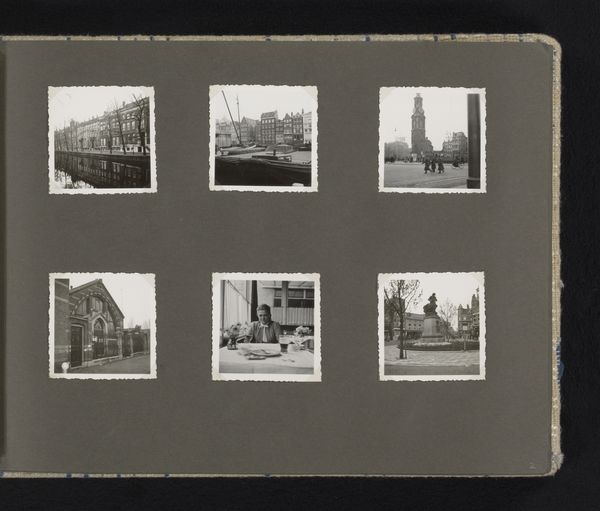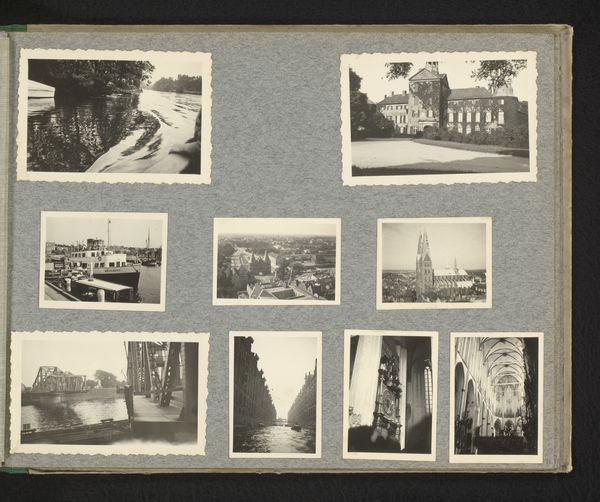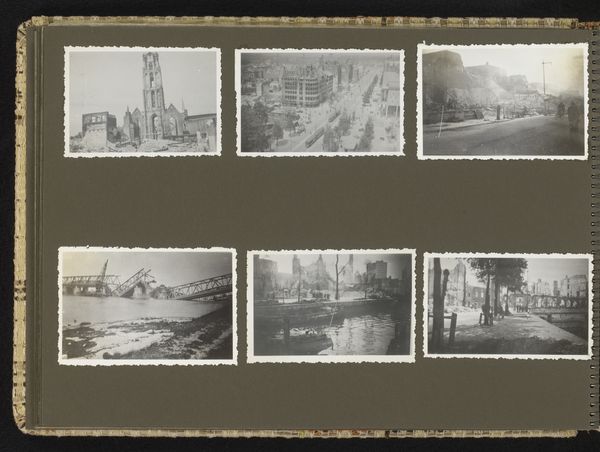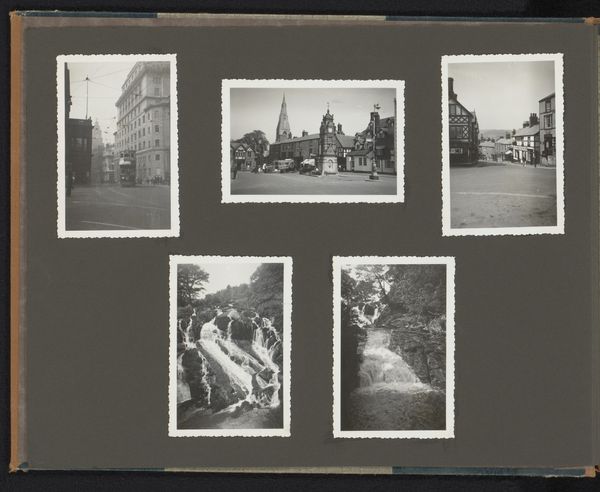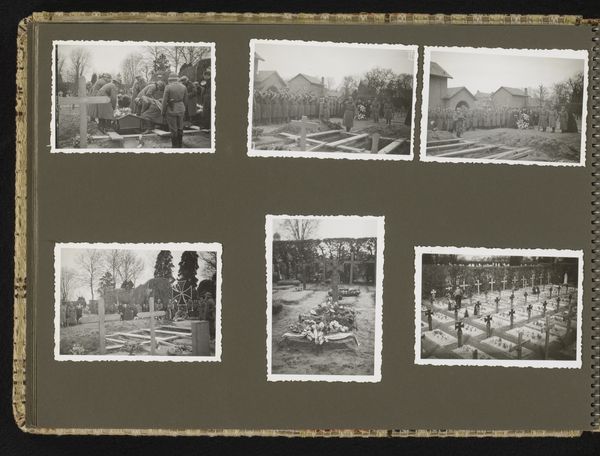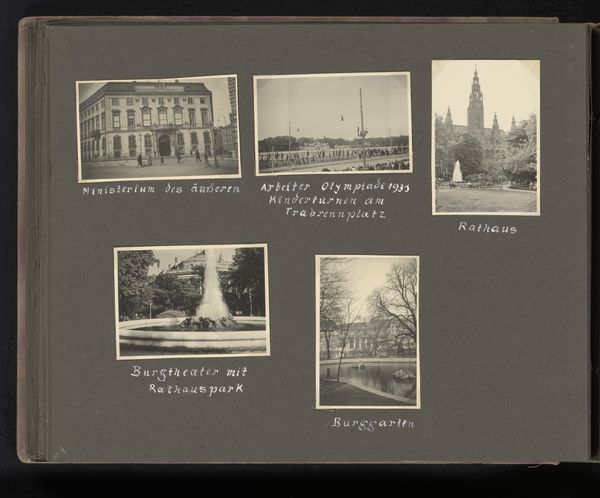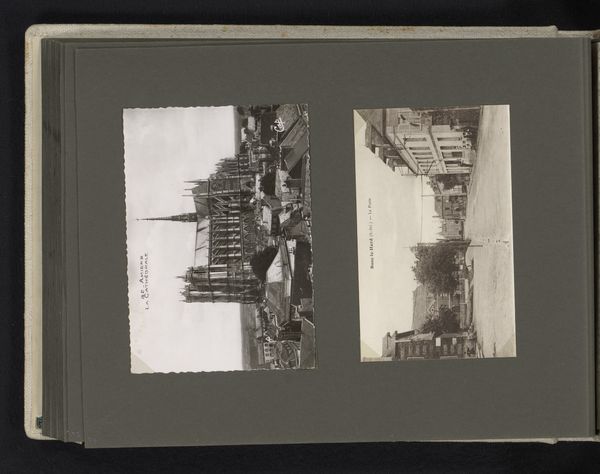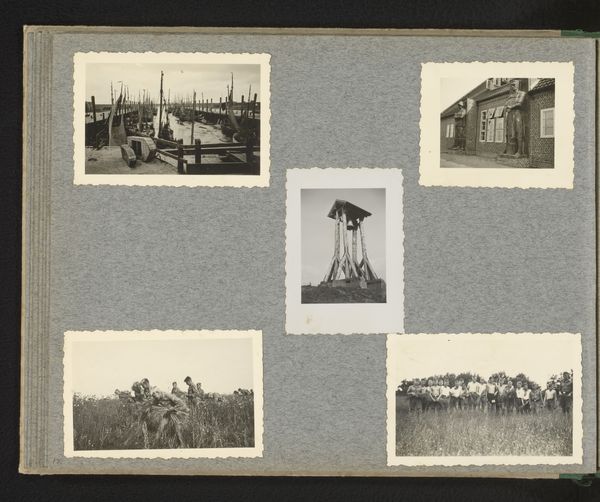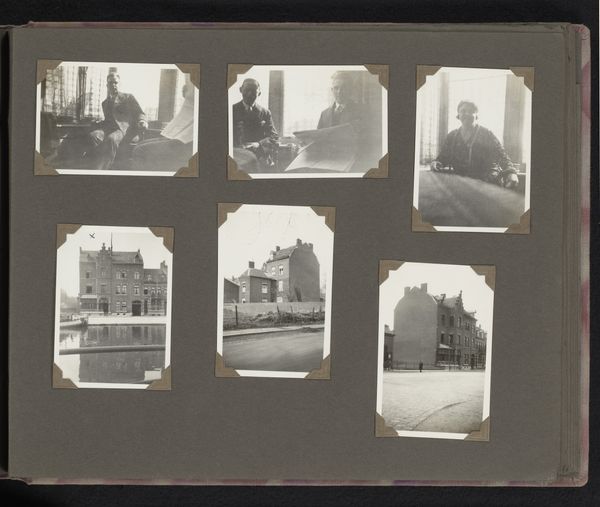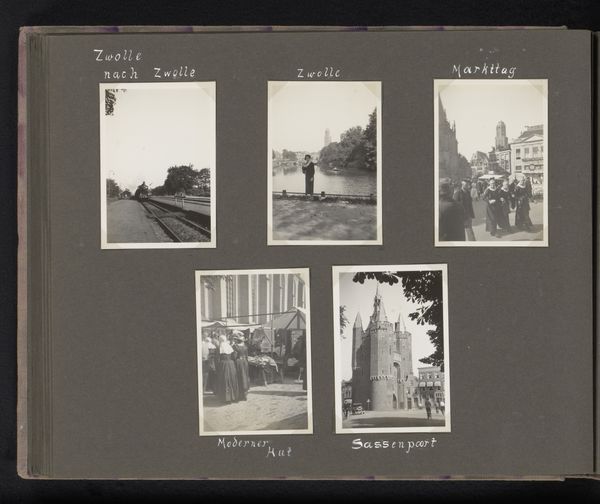
Dimensions: height 60 mm, width 90 mm, height 210 mm, width 290 mm
Copyright: Rijks Museum: Open Domain
Editor: This striking photo album, "Rotterdam gebombardeerd," created between 1940 and 1945, showcases gelatin silver prints depicting the devastation. I'm immediately struck by the repetitive geometric forms— skeletal buildings, shattered facades—arranged in a somewhat detached manner. How would you interpret this collection through a Formalist lens? Curator: Indeed, the arrangement itself presents a fascinating formal problem. Note how each image, while depicting horrific destruction, is framed with precision. The stark contrast between the geometric remnants of buildings and the organic chaos of debris is key. What do you observe about the use of light and shadow? Editor: The strong contrasts emphasize the textures of the ruined structures, creating a fragmented, almost abstract composition within each photograph. It feels more about shape than storytelling, somehow. Curator: Precisely. Consider the interplay of positive and negative space within the overall layout of the album. The placement of each print contributes to the cumulative visual impact. It invites an exploration of form, line, and texture, distilling the depicted events into purely visual elements. There are no clear narratives in this Postmodern work; rather, the image's materiality points towards our ability to 'read' photographs. Do you perceive a particular visual rhythm within these repetitions? Editor: I think so. The varying scales of destruction across the different images create a sort of visual heartbeat, moving from contained damage to broader ruin. This emphasizes the totality of destruction through repetition. Curator: Yes, an unsettling cadence develops across the page. The album, then, functions as a study in contrasts and reiteration, offering a meditation on form while hinting at absent realities. It strips away emotional narrative and offers visual construction. I believe a strong study into materiality may shed more light on this work. Editor: That’s helped me see it with fresh eyes—analyzing its pure visual elements and how the materials point toward the work’s intrinsic form and the reading we can undertake. Curator: Precisely, turning devastation into a collection of aesthetic problems is key.
Comments
No comments
Be the first to comment and join the conversation on the ultimate creative platform.
